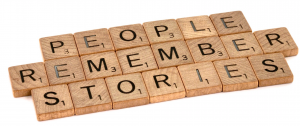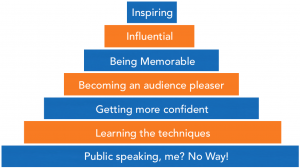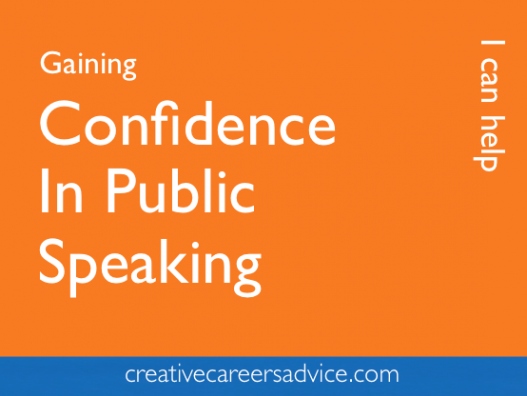Why should you consider public speaking skills an important part of your creative toolkit?
Because it helps you to improve your knowledge of the subject and service you’re selling to prospective clients. The preparation that goes into a speech and the fact that you have to work out how to communicate to others effectively makes you understand your delivery & content that much better.

Here’s a quick set of questions to ponder:
a) On a scale of 1-5, how confident are you at public speaking, pitching and presentation?
b) Are there aspects that make you apprehensive?
Keep those questions in mind as you read this blog that'll provide methods and techniques to help build self confidence in public speaking.
The Benefits Of Public Speaking To You And Your Future Career Direction:
- Career advancement
- A key employability skill
- Boosts confidence
- Aids Critical thinking & Personal development
- Develops communication skills
- Generates Personal satisfaction
- Expands your professional network
- Improves Negotiation & Persuasion
- Builds leadership skills
The importance of knowing your audience helps you become a more successful communicator of ideas and solutions.
Your preparation time needs to be spent thinking about:
- Who they are? Age, gender, job role socio-economic details?
- What do they do?
- What are their expectations and needs?
- What approach and content will resonate best?
- The action(s) you want them to take as a result of your pitch?
Suggested tool: ‘Crystal’ - a personality platform that allows your clients to determine likes & dislikes and creates a client profile. https://www.crystalknows.com/
How You Inspire Them
- Motivate them to adopt a more positive attitude, appeal to their feelings, hopes, behaviours, desires and goals.
- Mention the struggles to be encountered in the process.
- Emphasise the advantages, changes and benefits the information you impart will bring.
How You Say It

How You Manage Expectations
Alleviate the fear and build the trust. “This Idea Will Scare You Because…” Let the audience know you’ve considered things from their point of view, while also providing ways these fears could be dealt with.
Storytelling - the most effective way to merge meaning and emotions

Speaking to audiences to get your message across naturally is key. However we sometimes believe that the individual points you’re about to make are the essential components of your talk. But it's the story you're telling that ultimately will most effectively succeed in drawing clients attention and getting your message across.
To deliver an effective presentation, you need to spend time creating a narrative structure that supports your aims and your audience. Well-designed presentations flow and enable the whole room to engage and follow you perfectly.
Mood Setting
Your opening remarks will set the tone and the mood, so think carefully how you want your audience to feel.
Alert? Relaxed? Inspired? Critical? Receptive? Amused?
Deciding on a plan of direction and style of engagement will depend very much on the type of audience your addressing and the content and messages your communicating to them.
- Speak to your audience directly
- Where relevant use a ‘short-form’ narrative construct
- Never assume any two audiences will behave or react the same way to the same presentation & content.
- Create unique, valuable insights that can only come from you.
- Use humour, compassion, and empathy.
- Make your case - you’re seen as the expert in this situation.
- Ask the right questions to make them think and respond effectively.
- So when preparing - ask the question: "Whats in it for them?"
Allaying Fears & Building Confidence

We can train ourselves to become memorable, influential and inspiring.

If we look at building confidences and lessening our anxieties about performing and pitching to an audience, it might help to visualise it in the form of a series of steps.


Learning to Manage Our Anxieties
Many of us find it very challenging to stand in front of an audience and perform. However, because for those working in visual communication this is an integral part of the job, we need to find ways to cope and help ourselves manage these anxieties.
1) Greeting Anxiety When anxiety begins - acknowledge it and meet it head on. Say: “ I am feeling anxious” rather than ignoring the feelings and hoping somehow we'll get through it. This is a great 1st step.
2) Practice Firstly in front of a mirror - to yourself. Then to a small known audience of maybe 2 or 3. Take your time and progress to a larger gathering until you feel the confidence growing.
3) Feedback Don't be afraid to ask for feedback from your audiences.. it's the best way to learn how to improve. But start with the small group of friends, colleagues or family.
4) Always research and prepare your pitch and approach meticulously. The more you know about who your about to communicate with, the greater your confidence and therefore the more relaxed you’ll be.
5) Re-framing the situation Get to know who's in front of you. Use conversational language, with inclusive questions to engage your audience. Don’t use language that distances you from them.
6) Be In-The-Present Orientated Bring yourself into the present moment - focus on something to get yourself into the present.
Panic Button Off!
The moment you feel anxious or panicked when you need to perform in front of that audience, try turning early signs of worry to your advantage; pause, breathe and use the framework below to manage the fear factor...

Suggested Reading: 'Successful Presentation Skills' Andrew Bradbury. The Sunday Times
What’s the most important visual you can show an audience?
Yourself… Then add the fact that your voice is produced physically.
The result? The way you look and sound are hugely important concerning whether you're successful as a speaker.
And that includes your audience's physical responses to you, even though they're largely subconscious.

Hand gestures make people listen to you. Your body language and hand gestures can help drive your message home and encourage empathy, especially when you’re giving an important presentation or speaking in public.
Learning To Be More Spontaneous And Measured In Public Performances
1) We can get in our own way… We can put too much pressure on our audiences and ourselves to get it right and lose the ability to relax and act more spontaneously.
2) See public speaking as an opportunity and have fun. By re-framing the presentation as a positive: “Yes and…” rather than “No but…”
3) Slow down, breathe and listen We can jump ahead too soon in responding. To understand your audience - pause, and make good, effective use of brief silences. Allow interaction, this is where you practice good listening skills.

It’s here you’ll learn about the behaviours and earn those positive and rewarding responses from your various audiences.
Conclusions
Becoming memorable, influential and inspiring doesn’t come naturally to most of us and as we have seen, we all need to find useful techniques, gain knowledge of our subject, understand our audiences and learn through practice…
Being an effective communicator and influencer, relaxed and comfortable in promoting ourselves and selling our wares to large and small audiences is important in many professions… in the creative world, its an essential part of the skillset.
Be Ready To:
- Decide what you want to communicate
- What's the format and does it need visuals?
- Prepare, rehearse, and prepare again
- Make sure you know your audience
- Plan for awkward questions
- Use breathing techniques and frameworks to manage fears and anxieties
- Be relevant, succinct and timely
- Create a presence and be memorable
Action point: Why not now think of ways you might prepare and rehearse a speech and or presentation and practice in front of some colleagues or friends?
All photographs in this blog are courtesy of: Unsplash - https://unsplash.com/
© Paul Butler is a Creative Careers Adviser, Design Director and HE Lecturer in employability and Creative Industry careers.
For one-to-one creative careers advice and coaching contact me at: paulb@creativecareersadvice.com
If you found this blog useful share it with your contacts and follow me for more posts on creative careers advice and employability topics.
Related articles: 'Pitch & Presentation' and 'Understanding Essential Creative Industries Skills'
Why not sign up for membership of Tern Heads: https://ternheads.com/ A creative community of peers and professionals, dedicated to entry-level talent. We offer a network of accessible opportunities and a space to showcase your work to potential employers.
